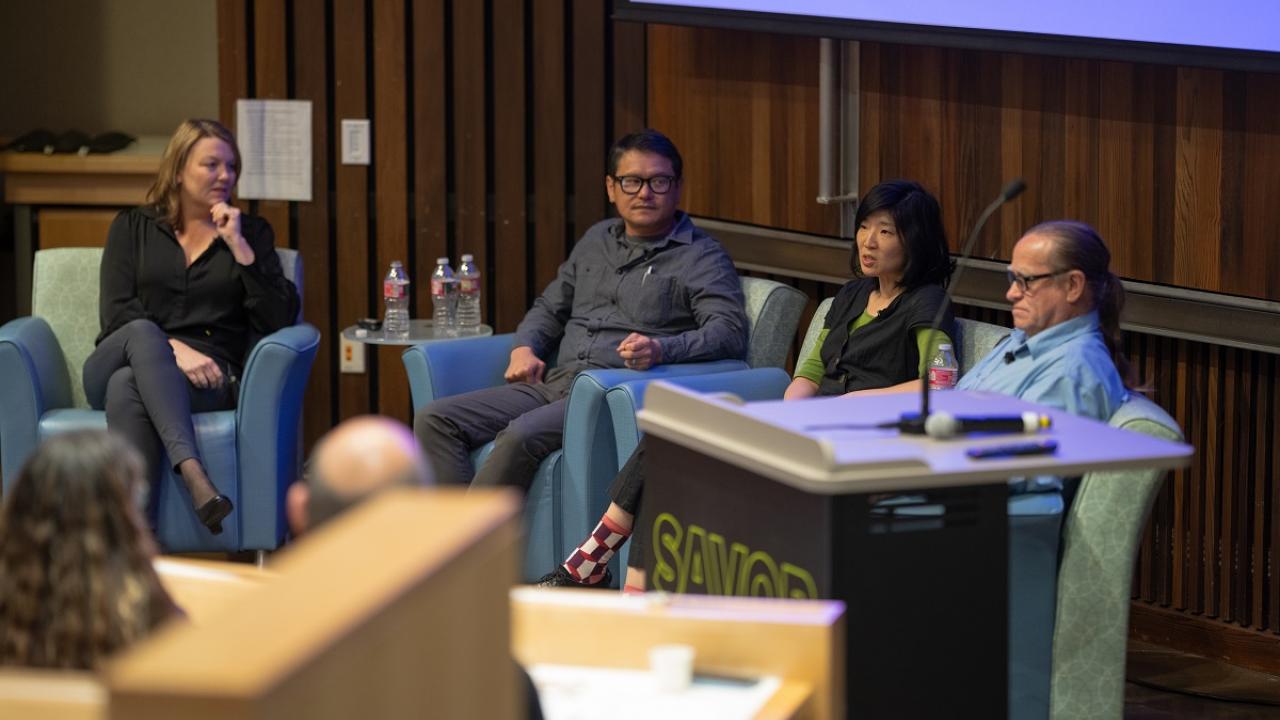
The Secrets of Sake: From Rice Production to Local Brewing
Have you ever wondered how sake is made? We asked experts in the field what’s brewing for this traditional Japanese beverage. From new innovative flavors to getting more sake in local stores, our panelists hope it will be the Bay Area’s next big hit!
Meet The Panelists
Joining the event is Yoko Kumano, the co-founder of Umami Mart in Oakland, California. She teaches sake classes and hosts the Sake Gumi, a monthly sake subscription service with over two hundred members. Another Oaklander, Yoshihiro Sako, co-founded Den Sake Brewery and is a regular collaborator with Umami Mart. Originally from Japan, he started brewing in 2007 and now produces over fifteen hundred cases a year.
Just as sake can’t be made without rice, the panelists wouldn’t be complete without Erin O’Donnell! At Sun Valley Rice, her work connects farmers to consumers through high-quality and sustainably grown California rice.
Sake 101
Sake’s origins are a mystery, though it likely began around the Yayoi period when rice cultivation spread from China to Japan. Sake used to be porridge-like until Kyoto demanded more shelf-stable products. The now traditional “Sandan Shikomi” is the process of adding rice, water, yeast, and koji mold three times to add volume. Finally, a filtering and pasteurization step was added to ship the sake further away.
After World War II ended, a huge surge of sake production took flight due to rice polishing and exposure to soldiers returning home. Polishing removes the off-flavor made from proteins around the kernel when interacting with alcohol and instead brings forth fruity or floral notes, depending on the variety of rice. With an alcohol content similar to wine (15-20%), sake is made to be sipped alongside food.
The Origins of Sake Rice
Sacramento is ideal for rice growing due to its heavy, clay-like soil, and California rice growers enhance this natural advantage through their commitment to sustainability. Rice paddies in Northern California supply 95% of wetland habitats in the state. They help maintain water quality, use zero waste in the fields, and nourish surrounding ecosystems.
With this great environment, many different types of rice are grown all over the state. However, less than 2% of the total crop is devoted to sake rice growth. The Yamada Nishiki rice variety, known as the king of sake rice, grows over 4 feet tall and is considered a premium. Over thirty craft brewers throughout the United States depend on this variety.
With Sun Valley being one of the few places that polish sake rice, scaling is a challenge for getting new seed programs. Erin explains that if more people demanded sake rice seed programs, they would have the ability to plant more.
Sake in the Market
While acidity defines wine, umami-rich koji mold defines sake. Since this flavor is unfamiliar to many American palates, sake is rarely sold outside of Asian restaurants. “I really love it when I see sake on a menu that is not at a Japanese restaurant,” Yoko comments. “I would urge people to go to their favorite bottle shop and say, Would you stock a local sake?”
Yoshihero is taking another step towards locally supporting others at Den Sake Brewery in Oakland. Their by-product of sake called “sake-kasu” is made into pizza dough by a nearby Italian restaurant, and their sake water is from the tap. Local sakes are also more sustainable in the long run since they limit pollution from overseas shipping.
Additionally, American sake breweries are more open to experimentation than traditional Japanese brewers. Through polishing techniques, the proteins can drastically change a sake to become more compatible with richer American foods like pizza or cheese. Though a fraction of California’s rice is used for sake today, consumer demand could help expand that—and support a growing local industry.
Visit the Savor webpage to watch the event recording.

Gwen Gonzalez is a fourth-year food science major passionate about storytelling and food innovation. She is an active member of the Food Tech Club on campus and assists in Guinard's Lab pursuing sensory science. When she's not thinking about food, she immerses herself in music and the performing arts at the Manetti Shrem Museum and Mondavi Center for the Performing Arts. In the future, she hopes to merge her interests in food and the arts and contribute to creative research and development in the food industry.
